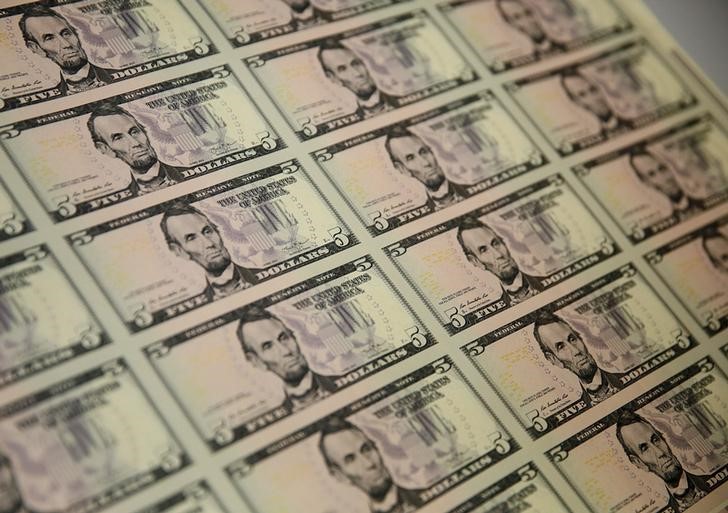Investing.com - The dollar pushed higher against other major currencies on Thursday, as the release of strong U.S. consumer sentiment and jobless claims data overshadowed recent comments by U.S. President Donald Trump.
EUR/USD slid 0.40% to 1.0622, pulling further away from a one-week high of 1.0678 hit overnight.
In a preliminary report, the University of Michigan said its consumer sentiment index climbed to 98.0 this month from 96.9 in February, confounding expectations for a fall to 96.5.
The data came after the U.S. Labor Department said initial jobless claims fell by 1,000 to 234,000 for the week ended April 8 from the prior week\'s revised 235,000. Analysts had expected jobless claims to rise to 245,000 last week.
On a less positive note, data also showed that the U.S. producer price index fell 0.1% in March, compared to expectations for a flat reading. Year-on-year producer prices increased 2.3% last month, below expectations for a 2.4% gain.
The greenback had broadly weakened after U.S. President Donald Trump told the Wall Street Journal on Wednesday that the dollar "is getting too strong" and that he would prefer the Federal Reserve to keep interest rates low.
Markets were also jittery after President Trump said the United States' relationship with Moscow "may be at an all-time low."
Elsewhere, GBP/USD slipped 0.14% to 1.2520.
USD/JPY gained 0.23% to 109.30, while USD/CHF rose 0.19% to trade at 1.0045.
The Australian and New Zealand dollars remained stronger, with AUD/USD up 0.77% at 0.7581 and with NZD/USD climbing 0.42% to 0.7000.
Earlier Thursday, the Australian Bureau of Statistics said the number of employed people increased by 60,900 in March, blowing past expectations for an increase of 20,000.
The number of employed people rose by 2,800 in February, whose figure was revised from a previously estimated decline of 6.400.
The unemployment rate remained unchanged at 5.9% last month, in line with expectations.
Elsewhere, data showed that China’s exports increased by an annualized rate of 16.4% in March, while imports climbed 20.3%.
China is Australia’s biggest export partner and New Zealand’s second biggest export partner.
Meanwhile, USD/CAD held steady at 1.3255, just off a six-week low of 1.3224 hit earlier in the session.
Statistics Canada reported on Thursday that manufacturing sales slipped 0.2% in February, compared to expectations for a 0.7% decline.
The U.S. dollar index, which measures the greenback’s strength against a trade-weighted basket of six major currencies, was up 0.35% at 100.41, off a two-week low of 99.94 hit earlier in the day.
